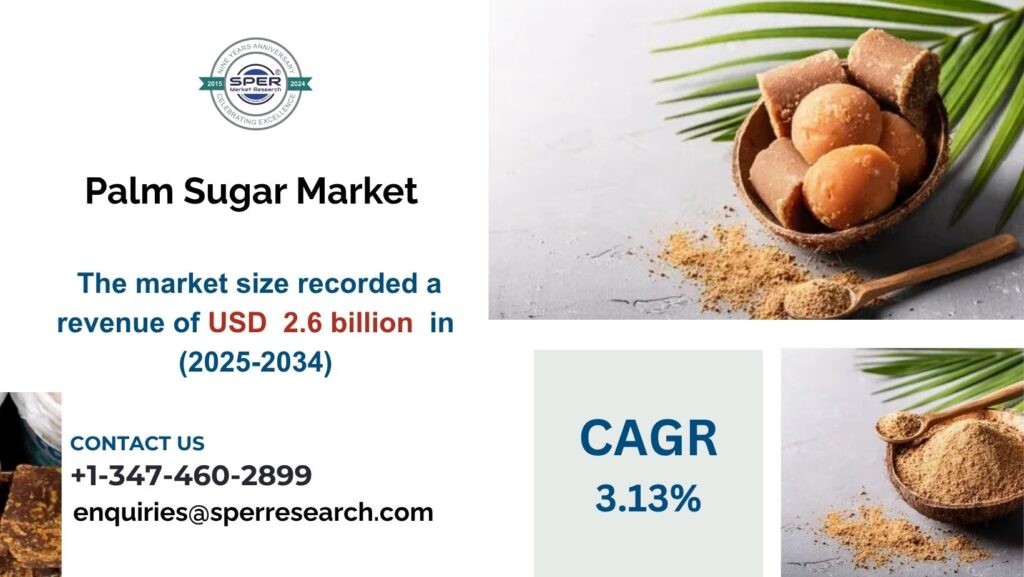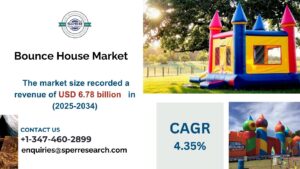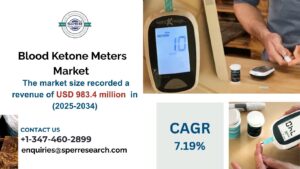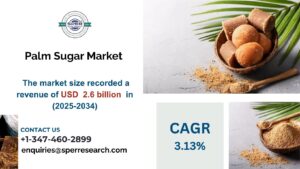Global Palm Sugar Market Trends and Growth Insights

The sap of various palm tree species, such as the sugar palm, date palm, and coconut palm, is used to make palm sugar, a natural sweetener. The sap is collected, boiled, and evaporated to produce concentrated syrup, which solidifies into crystals, blocks, or paste-like structures. Because of its rich, caramel-like flavor and lower glycemic index, it is frequently used as a refined sugar substitute in both traditional and modern cuisines. Palm sugar is widely used in Middle Eastern, Asian, and African cooking to sweeten beverages, desserts, and sauces. It is valuable due to its unique flavor and minimal processing needs.
According to SPER market research, ‘Global Palm Sugar Market Size- By Type, By Form, By End User- Regional Outlook, Competitive Strategies and Segment Forecast to 2034’ states that the Global Palm Sugar Market is predicted to reach 2.6 billion by 2034 with a CAGR of 3.13%.
Drivers:
One of the key factors driving the palm sugar market is growing consumer awareness of the detrimental health effects of consuming refined sugars. Palm sugar is often considered a healthier option because it contains antioxidants and trace minerals like potassium, magnesium, and iron. Customers who are worried about their health have increased the demand as a result, especially in countries like the US and Europe, where people are growing more interested in natural and organic food ingredients.
Palm Sugar Market Sample in PDF Format, Click Here
Restraints:
Despite its many advantages, the market for palm sugar faces several challenges that could restrict its growth. Two of the primary challenges are the lack of palm trees and the concentration of palm sugar production in some location. Southeast Asian countries are the main suppliers of palm sugar, and this geographic concentration could make the supply chain vulnerable. Changes in the raw material market can also affect the price of palm sugar. Additionally, the labor-intensive nature of palm sugar production contributes to its high cost.
The Asia Pacific region dominates the palm sugar market. Large-scale palm tree cultivation is made feasible by the Asia Pacific region’s ideal climate, which boosts the market through a robust local supply chain. Customers in the Asia-Pacific region are becoming increasingly concerned about how food production affects the environment and society. As a result, sustainably sourced palm sugar products are growing in popularity. Some of the key market players are Agro-Productos del Trópico, Cocoasia Philippines, Cocowell Farm, El Guapo, Farm Organic, Jaggery Works, La Blanquita, La Palma Organics, Mitr Phol Sugar Corporation, and Palm Organix.
For More Information, refer to below link: –
Related Reports:
Follow Us –
LinkedIn | Instagram | Facebook | Twitter
Contact Us:
Sara Lopes, Business Consultant — USA
SPER Market Research
enquiries@sperresearch.com
+1–347–460–2899





